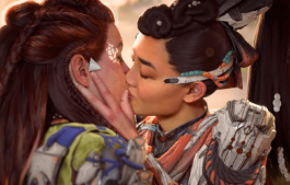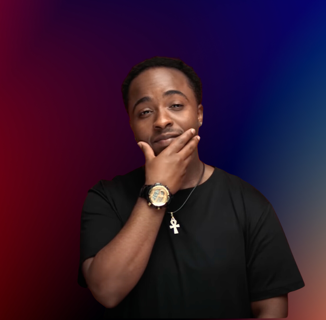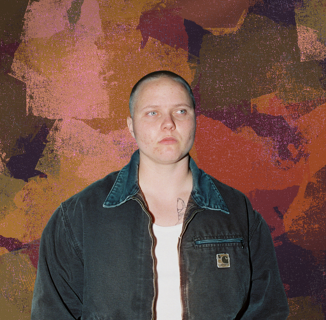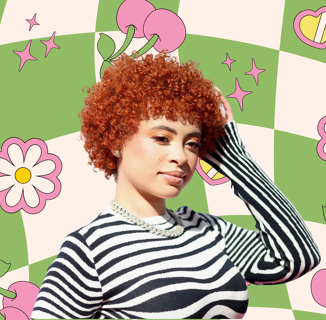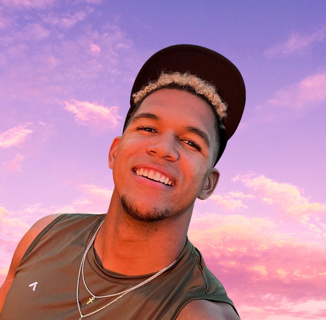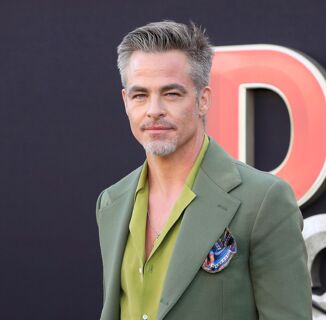Nabi H Ali was in college, on track towards a degree in international relations, when he decided to make a risky life change. He wanted to become a professional artist.
“I felt so miserable after every single day at class, and coming back to my dorm the only thing I could do to cheer myself up was draw,” he tells INTO. “It took me a year to figure out I didn’t want to be a lawyer or sorting papers in the UN. So, I dropped out of my university and transferred to art school to major in animation.” But Nabi didn’t want to be just any artist—he wanted to be the kind of artist who is proud of his Tamil Nadu heritage, proud of being Thirunar (a cultural gender identity in Tamil society), who brings his identities and values to work every day. Now, Nabi is a professional illustrator for children’s literature, rendering marginalized representation in beautiful works of art.
It began with odd jobs and illustration commissions in college, and The Bright Agency quickly caught on to Nabi’s talent and recruited him. Through agency representation, Nabi had found not only consistent work but the freedom to choose the projects that most interest him—those that centered stories like his own. His work since has ranged from indie books to kid’s animation to Marvel comics. One of the first children’s books he illustrated was Annette Bay Pimentel’s All The Way to the Top, the true story of eight-year-old disability activist Jennifer Keelan-Chaffins. He followed this up by illustrating Rob Sanders’ The Fighting Infantryman, the story of the historical transgender Civil War soldier, Albert DJ Cashier.
“Luckily, my agent James Burns knows exactly what kinds of projects I like, so I don’t feel a dearth of work,” Nabi explains. “I get so excited to be a part of anything with South Asian characters, my most favorite projects including “Laxmi’s Mooch,” by Shelly Anand—which is a celebration of self-love and body hair—and “Ms. Marvel: Stretched Thin” by Nadia Shammas, which gave me the opportunity to contribute to the lore of my most favorite superhero, Kamal Khan/Ms. Marvel!”
Related:
Horizon Forbidden West’s Big LGBTQ+ Story & Why Critics On Both Sides Are Wrong
Horizon Forbidden West’s Burning Shore’s DLC has been review bombed for queer content, but the critics on both sides are wrong.
Nabi’s ambition does not end with children’s literature. Last year, he was involved in what would have been Netflix’s first authentically South Asian animated series, Boons and Curses, before the streamer pulled the plug. Now he is currently in the process of pitching his first graphic novel, adding “author” to his growing list of credentials.
In the meantime, Nabi continues to illustrate children’s literature with diverse representation that is nuanced and challenging. “I don’t want representation to be a checklist where you put bodies in front of a camera or on canvas and let an audience mindlessly consume (because art is not for consuming—it’s for experiencing!)” he says. “I think it should be intentional and always seek to break boundaries.”
His approach to illustration is often inspired by South Asian religious imagery. “Growing up, I mostly drew religious art—mostly of Hindu gods,” Nabi recalls. “Eventually I progressed onto other subjects like Islamic, Christian, and Tamil folk religious art. Theology/folklore is still the gift that keeps on giving for much of my hobby work.”
At the same time, he is keenly aware of the way religious subjects have traditionally been used to reinforce gender roles and caste hierarchy (“caste” is a complex term that refers to the social stratification contributing to marginalization in South Asia to this day.) He is also aware that these are not the only stories the history of religion has to tell.
“A lot of my personal art deals with the radical and revolutionary spirituality of the masses—of Dalit-Bahujan gods and saints, of folk Muslim practices with syncretic congregations, of Dravidian mother goddesses who don’t turn anyone away—rather than within the boundaries of ‘organized’ religion and its many rigid boxes,” he says.
Within his professional work, he brings this anti-caste ethos and multi-layered view of humanity to South Asian characters. “There isn’t much South Asian rep, and when there is, it’s hyper-saturated with upper caste (and often North Indian) cisheteronormative stories,” he says. “What about Dalit-Bahujan-Adivasi, queer, Muslim, Sikh, and/or Dravidian characters? Is your retelling of South Asian folklore Brahminical, or is there some other way you can explore this? Are you only focused on skinny, conventionally-attractive bodies?”
I think art should be intentional and always seek to break boundaries.
Nabi H Ali
When done well, Nabi believes that diverse and honest representation can change readers’ lives, especially young readers. “My hope is for readers to see diversity that makes them think, that makes them actually learn and think critically about themselves and the world around them, instead of just adding accessories towards their comfort zone and calling it a day, like slapping a Pride sticker on a cop car,” he says.
What the creative industry needs is more queer artists like Nabi pushing boundaries. And from his experience, there are plenty of opportunities for LGBTQ+ creatives to leave their mark on the industry. “The possibilities of getting out there are endless,” he says. “Just keep doing what you love and eventually that passion will translate and people will notice. And that feeling of finding an audience that feels seen and understood through your work is the best payoff out there.”
At the same time, Nabi does not sugarcoat the realities of championing marginalized voices in a time when they are under assault. His advice for the next generation of LGBTQ+ change-makers is to be realistic, focus on the positives of the work you do, and don’t be afraid to set your boundaries to maintain your safety and well-being.
“A lot of bigoted people are loud, they are bullies, they go to a lot of lengths to harass someone who they know is speaking out,” Nabi warns. “A lot of my anti-caste and queer activist and creator friends regularly go through this. I still get bombarded and dogpiled for my work from time to time. But just know that you are doing something right, and through your work, a lot of people like you who didn’t get to see themselves represented will finally find a voice in what you make. … But [that] doesn’t mean you should intentionally push past your boundaries and put yourself in unsafe situations, and I say that especially for my fellow trans folks, namely trans folks of color, even more specifically Dalit and Black trans folks.
“I know this is a very difficult moment, with the anti-trans legislation and censoring of critical race theory in the US, the hate campaigns in the UK, the pushback against Khawaja Sira [trans community] in Pakistan, the opposition to horizontal trans reservation in India. There is a lot happening globally, and it’s okay to feel vulnerable and scared. Sit with those feelings, take as much rest as you need. Your work should provide healing for yourself first! Your joy is not selfish; it is a big, big part of our global fight for a queer, trans, anti-caste, anti-racist future.”
Help make sure LGBTQ+ stories are being told...
We can't rely on mainstream media to tell our stories. That's why we don't lock our articles behind a paywall. Will you support our mission with a contribution today?
Cancel anytime · Proudly LGBTQ+ owned and operated
Read More in 25 Under 25
The Latest on INTO
Subscribe to get a twice-weekly dose of queer news, updates, and insights from the INTO team.
in Your Inbox


